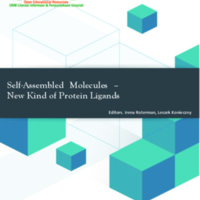Self-Assembled Molecules – New Kind of Protein Ligands
Dublin Core
Description
The standard substrate complexation mechanism engages natural binding sites. In contrast, supramolecular structures may form complexes with proteins by
penetrating in regions which are either naturally unstable or become temporarily accessible due to structural
rearrangements related to the protein’s function.
This may result in enhancement of irreversible
processes (e.g. immune complexation or complement
activation) or inhibition of reversible processes (e.g. enzymatic catalysis). Only ribbon-like supramolecular
structures may form complexes with proteins. Having
anchored itself inside the protein, the supramolecular ligand is protected against environmental factors
such as changes in pH. This type of interaction represents
a unique, nonstandard phenomenon in the context
of proteomics.
penetrating in regions which are either naturally unstable or become temporarily accessible due to structural
rearrangements related to the protein’s function.
This may result in enhancement of irreversible
processes (e.g. immune complexation or complement
activation) or inhibition of reversible processes (e.g. enzymatic catalysis). Only ribbon-like supramolecular
structures may form complexes with proteins. Having
anchored itself inside the protein, the supramolecular ligand is protected against environmental factors
such as changes in pH. This type of interaction represents
a unique, nonstandard phenomenon in the context
of proteomics.
Publisher
Contributor
Cut Rita Zahara
Rights
Creative Commons
Type
Files
Collection
Citation
“Self-Assembled Molecules – New Kind of Protein Ligands,” Open Educational Resources (OER) , accessed January 16, 2026, http://oer.uinsyahada.ac.id/items/show/330.


